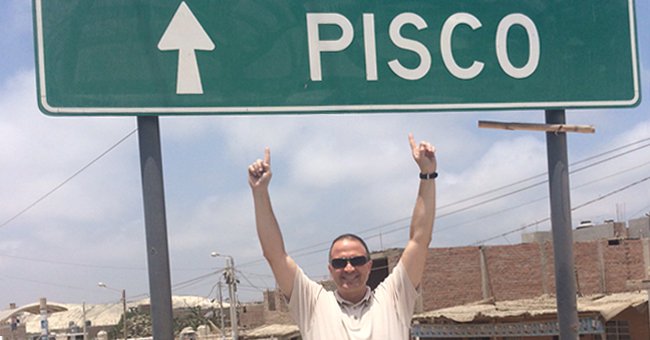One of the joys of being someone who works with spirits, especially one with an inclination toward classic cocktails, is being part of a tradition. Classic drinks, like the Singapore Sling or the pisco sour, come from specific places and times, and mixing them can be a way of keeping their history and the context they came from alive.
For Diego Loret de Mola, starting his pisco brand, BarSol, in 2002 was the beginning of a life steeped in history, intertwining stories spanning from the conquistadors to to the Gold Rush to the renaissance of modern Peru.
“I started investigating pisco to see what are the opportunities historically,” Loret de Mola says of the early stages of his life in pisco, which he began after a successful first career as a financial trader. “I was mesmerized to learn so many things about pisco.”
One of Loret de Mola’s first discoveries about the drink was its role in the happening pre-Prohibition-era cocktail scene in San Francisco, where pisco punch was the first cocktail to include the clear, un-aged brandy.
“What an opportunity to revive a tie between Peru and America!” Loret de Mola thought. So, mirroring the journey pisco took during the Gold Rush, when crews coming to the Americas from abroad would stop in Peru for mining equipment (and a few bottles of the spirit) on their way West to look for gold, Loret de Mola traveled to San Francisco to study more pisco history in the libraries there.
In 2004, as BarSol was beginning to gain traction, Loret de Mola met kindred spirits in Brian Rae and John Burton of the United States Bartenders’ Guild. Both professional bartenders, they shared Loret de Mola’s enthusiasm for cocktail history, and the three became fast friends. Over the years, they’d go on to do things like present antique cocktail books and pisco history side by side at a museum exhibit for the International Bartenders Association. They even discovered Duncan Nicol, the man credited with inventing pisco punch in San Francisco around the turn of the century, and located his long-forgotten tomb, leading a pilgrimage to it for bartenders from the USBG in 2008.
“Along that pilgrimage, I validated that it did exist. All of a sudden the value of the perception of pisco changes because it’s a very strong historical spirit,” Loret de Mola says.
Just for kicks, Loret de Mola and his friend Jose Antonio Schiaffino (Chafi for short) found the tomb of Victor Morris, the inventor of the pisco sour, that same year and unveiled it as well.
Meanwhile, beginning in the early 2000s, Loret de Mola was flying to USBG chapters around the country, meeting people at the forefront of a burgeoning cocktail scene.
“The cocktails scene was very simple. It was vodka on the rocks. Forget about drinking a gin martini! The cocktails were very simplistic,” he says.
He visited Francesco Lafranconi, director of mixology and spirits education at Southern Wine & Spirits Nevada, and presented him with a few versions of pisco sours and punches. Pleased, Lafranconi whipped up some cocktails of his own.
“He was squeezing passion fruits from New Zealand and throwing on different garnishes. I never imagined how this could be prepared! I always had it as a sour. What he showed me was what was going on at the time in the Food Network, this revolution of gastronomy, but in a liquid form.”
Armed with a coterie of like-minded friends, a deep knowledge of the spirit’s history and a vision of pushing pisco forward while honoring its history, Loret de Mola joined the vanguard of cocktail progressives he had been traveling the country to learn from. He joined the third Tales event in 2006 and found bartenders receptive to and excited about his product. Many of them came to Peru to visit his distillery there.
“A trip to Peru is a life-changing trip. I don’t just sell pisco, I sell Peru through a glass,” Loret de Mola says.
His passion and personal touch worked, and over the next decade, piscos began to creep onto more and more menus and to find an international audience.
“You can now find pisco in Japan, Southeast Asia, Scandinavia, countries that are growing and want to have more ingredients and experiences from other countries,” Loret de Mola says. “This journey still has much road left to cover, and it will be a lifetime quest for myself.”





